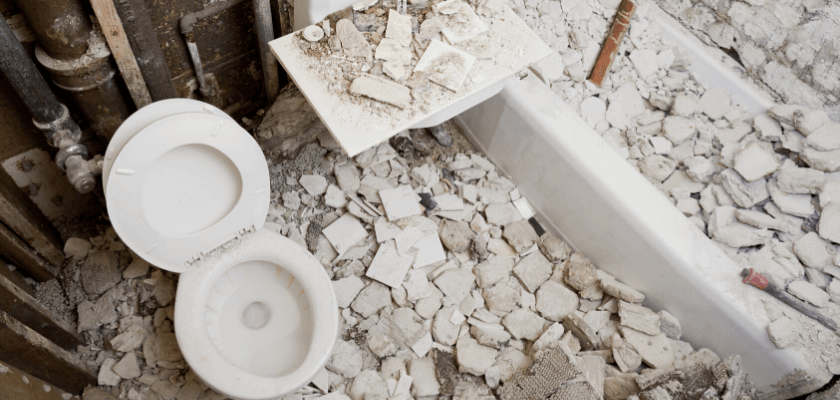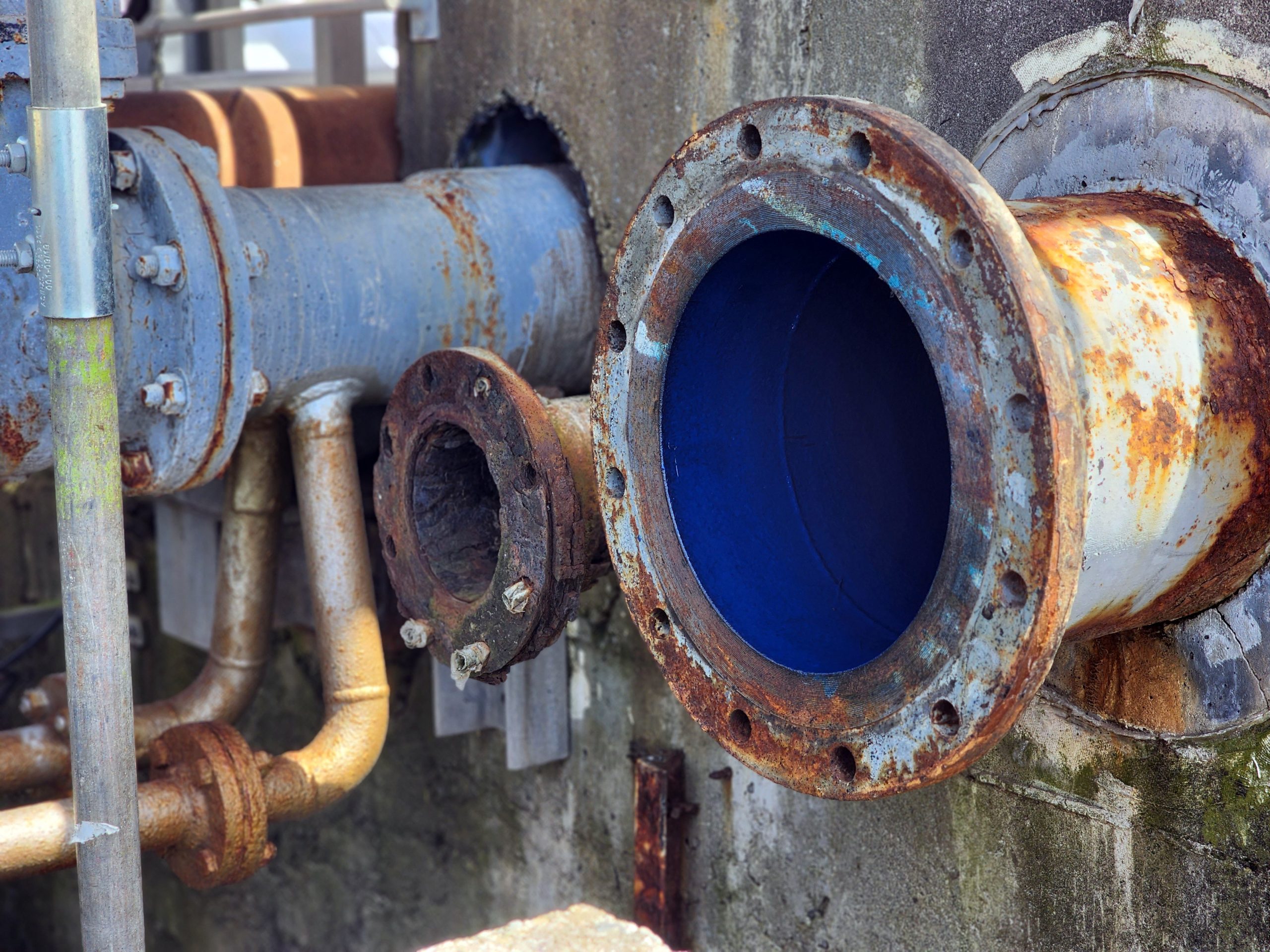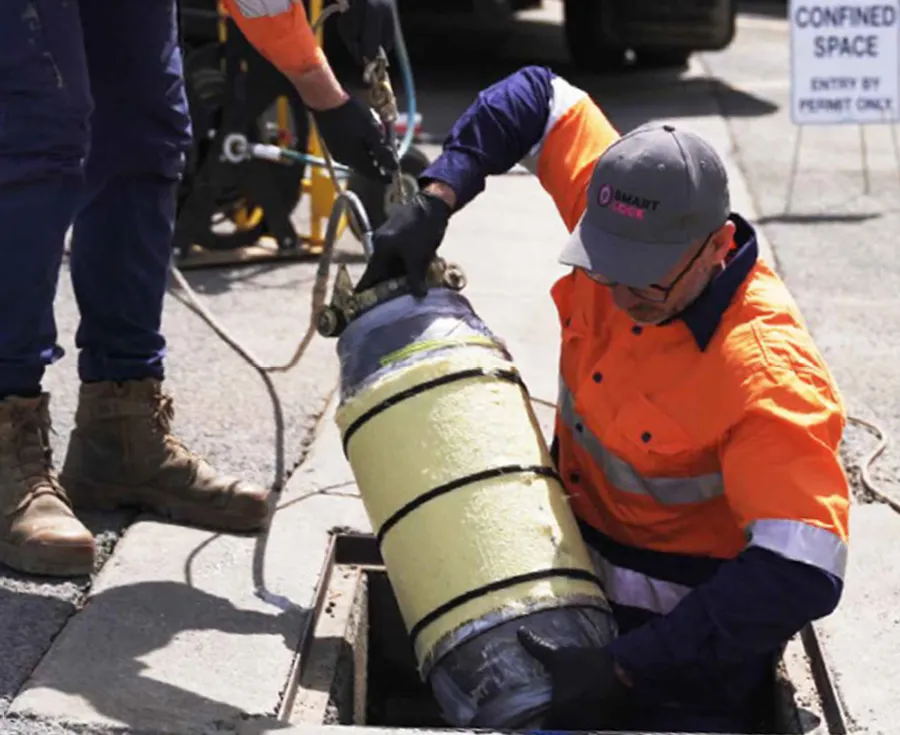Out of sight, out of mind might be a great philosophy to use when getting rid of clutter around the house. But when it comes to using your home’s drains and toilets like a garbage disposal, the practice can come back to bite you.
It may come as a shock to some people, but household pipes are not designed to act as a repository for everything that will fit down the hole. And whilst gravity and water flow might be enough to get things out of sight, if it’s not meant for drainage and sewer systems it will often block pipes and really give your mind (and your hip pocket) something to work on.
This article discusses some of the most common ways cement and other building materials find their way into pipes and the damage that can be caused. It also offers some helpful advice to keep tradesmen honest so you don’t end up with blocked cement in drain pipes.
How do you get cement in drain pipes?
From what we’ve been told, plumbers see a lot more cement in drain pipes than you’d expect. Things like selfleveling compounds, tile grout and even adhesives seem to find their way down into our precious drains, and the problems that can ensue are significant. But how do you get things like cement in the shower drain in the first place?
Lazy indifference:
If you’ve ever used a cement mixer you’ll know cleaning it out after a few loads will produce a lot more concrete (both hard and soft) than your logical brain would consider was a healthy concoction to pour down the drainage system. But often when light is fading, the mossies are biting and it’s been a long day, people get lazy. For the most part, cement and other building products find their way into drains because of laziness or complete disregard. During renovations/new builds tradesmen (and even home handy persons) have to frequently rinse hands and equipment and that conveniently large and sturdy laundry sink can sometimes be a temptation too hard to resist.
Ignorance or accident:
The most common ‘accidental’ means by which concrete ends up in drains is when a bathroom is being renovated and newfloor bedding installed. Getting the right fall on the bedding (so that water drains correctly) can sometimes mean working very close to the shower or central drain and it’s easy for excess material to fall through the grates.
Even when renovators/tradespeople are trying to do the right thing and washing up their tools etc. outside, depending on how drains are configured there is still a chance that considerable amounts of concrete, grout, plastering product and tile glue can make its way into the pipes. From there it settles and eventually dries, forming blockages that can trap other items travelling through the drain
There can also be times where a bag of cement will accidentally be spilt and one way or another ends up in the pipes, or a mound of plasterer’s cement drops into the toilet bowl, but they are less common.
Maliciously:
Finally, there are times where disgruntled tenants or contractors will intentionally fill a drain with concrete as a means of revenge. Plumbers share tales of landlords who had to get heavy with a tenant to get them out of a property only to find (months later) the pipes are backing up. When they investigate, they find their drains are chock full of hardened cement thanks to the angry tenant intentionally filling them with cement. With no evidence to prove what has happened, they have little way of being compensated and depending on the severity of the blockage the whole plumbing system may need to be replaced, costing thousands.
Angry contractors, too, have been known to use this trick to get back at developers who they believe haven’t kept up their end of the bargain. Often by the time the water is connected in the new building and the problem is discovered, there are few options for compensation because lack of evidence and often they have to start from scratch and install new plumbing.
What problems can cement in drain pipes cause?
When cement and other building products are diluted and moving through a pipe, things will appear to be fine. But it can be a very different story once the taps are turned off.
- When water flow stops the sand and aggregate particles settle in bends, joints, and low-lying bellies or sections of pipe.
- If there is no water in that section of pipe and the product is allowed to dry it becomes hard.
- Even when water begins flowing again the hardened mass will often remain stuck to the walls of the pipe.
- Thereafter it will act as somewhat of a dam reducing the pipe’s diameter and flow rate and trapping other matter (food, hair, grease etc.) as it moves through the pipe.
- Eventually, a drain blocked with cement will block and back up altogether, meaning it will need to be cleared out.
- Depending on how long the blockage has been there and what damage is done in the concrete removal process pipes may need to be replaced or relined.
5 Tips to avoid having cement in drain pipes
If you’re renovating or having any work done on your house which involves the use of cement, concrete, grout, floor levelers, glues and adhesives we advise you take the proactive approach.
1. Ask tradesmen how they intend to clean up after themselves.
When gathering quotes, ask each trade how they plan to clean up their tools. Discussing this upfront will put them on notice that you do not expect their response to be that it will go down your drains. If they are working in the bathroom or near sinks you can also ask them to use duct tape to cover the grates and drains so that remnants do not accidentally fall in.
Perhaps also explain you regularly have CCTV drain inspections as part of your pipe maintenance schedule (you do, don’t you?) and that you want nothing left in the drains post-renovation. Get it in writing that if anything’s found, they will be liable. This may not hold up in court, but it certainly makes it clear you’re serious about keeping your pipes clear of sediment and unwanted rubbish.
2. Erect signage requesting that sinks are not used for cleanup.
Even with that said and agreed upon, there are other steps you can take to hit the message home. Erecting a sign near any garden, laundry or garage sheds (and even the bathroom sink if they are working in there) will help. Ask that no concrete, glue, cement powder or other building refuse be washed down the drain as a friendly reminder that you’re serious about not having drains blocked with concrete.
3. Provide an alternate place for them to clean up.
That said, the poor tradies do have to wash up somewhere. If you are stipulating they don’t use the sinks and drains in your home, you will have to provide them with an alternative. Perhaps speak with them first about what will work best, but don’t be afraid to make suggestions that work for you as well. You might want to provide some large buckets or even a ‘clam-shell’ kids’ pool filled with water for them to rinse tools in. It will work out much cheaper than a blocked drain.
4. Hose off in the yard with DIY jobs.
Of course, if it’s a DIY job around the home it might be you or your partner who’s covered in concrete dust or needs to wash tools. Again, get the buckets ready before you start and hose off in the yard when you’re done to reduce the risk of getting cement in the shower drain. Even a small blockage can trap other matter over time and become a much bigger problem. As far as possible, try to ensure the run-off in the yard isn’t going off into another drainage system, particularly if you’re rinsing out a cement mixer. Aim to rinse or wash on pebbles or pavers so that residue won’t harm plants or grass. Anything that hardens can also be easily removed later.
5. Erect general signage about what can and can’t go down the sink.
Even if you don’t have a big renovation job right now, erecting signage discouraging washing cement-covered hands or tools in the laundry or garage sink can also help reduce the likelihood of having drains blocked with concrete. Some people seem to think that just because laundries and garages are places where ‘work’ is done, the sinks there are miraculously different to the other sinks and drains in a home. They’re not. Sinks in laundries, garages, tool sheds, toilets and even the drains under grates in the yard, are all connected to your waste systems. They’re not designed to transport cement or other building materials away from the home and to use them this way is asking for trouble.
If you think you might have blocked pipes on your property you can learn about common signs here. If you want more information about cement, concrete, or other building products in pipes and how to remove them, contact us atnuflow.net




